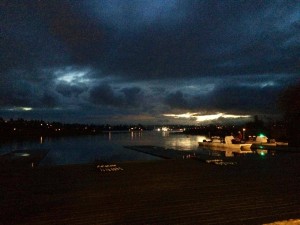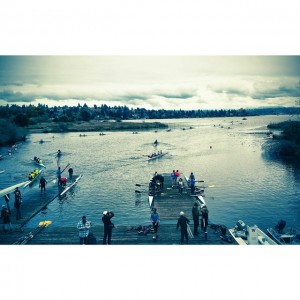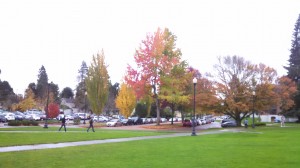A race is not won in one stroke, but many strokes over the length of the course. Before you pull up you are tapped on the back you turn and there is a hand outstretched. You extend your own hands in front and behind you to your teammates, there is a momentary silence and everyone’s hands squeeze. The hands all squeezing are like a silent mantra, “We can do this, together.” All hands drop and your return to your positions looking dead ahead, where you will look for the rest of the race. “All eight sit ready,” the coxswain’s voice rings out over the silence, “attention, Row.” All nine prepare as they gain speed into the line. The knock of the oar at the end of each stroke signals the next swing out to the catch. Up the slide, roll the wheels, knock goes the blade as it is turned to the correct position. Splash, as the blade is backed into the water and a v of water sprays off either end. Woosh of the slide as eight rowers push off and lean back. Knock. The cycle repeats as the coxswain calls the rowers to add some more push. They come closer to the line. “You are at a 28, two more strokes to build to our race pace of 30. That’s one.” Splash. Knock. Woosh. “That’s two.” Splash. Knock. Woosh. “You’re on! This is where we start it right here!” You have passed the starting marker now a bright bobbing triangle in the recent distance. “We have already begun walking the crew ahead of us.” You keep your eyes locked ahead pushing away stroke by stroke, the competitors behind you. Each stroke is easy now, you are running of free energy as you go into the first turn of the race. “This is going to be a port turn. Ports pressure up. Starboards pressure down.” The boat pivots to starboard with each stroke. “Even pressure!” The hard knock signals the rowers’ response. Down and away to keep the blades off the water. Sitting up at the catch to grab that last bit of water. Jumping off on the drive and easing up on the recovery. Shook, is the rush of air out of each pair of lungs on the drive. Ahh, is the inhalation of each pair of lungs on the rowers’ way up to the catch.
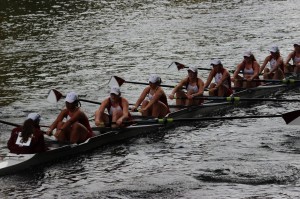
Photo Credit – Hailey Greer (In the Montlake Cut) The Coxswain is wearing a jacket and back is turned in this picture
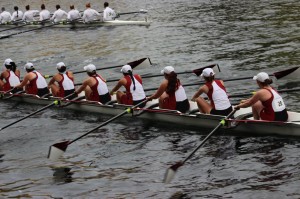
Photo Credit – Hailey Greer (In the Montlake Cut) Starboards are people who’s blades appear on the left side of the picture, while Ports are rowers who’s blades appear in the right side of the picture
“We are coming in to the Cut.” Every muscle in your body tenses. Every person sits up taller. “That’s your team cheering for you. Show them how we take this boat.” Shook. Ahh. “With Power!” Shook. Ahh. “With Grace.” Shook. Ahh. The sound of the Logger cheer rises as you get closer. “Make them proud!” Splash. Knock. Woosh. The boat is continuously picking up speed. Your crew is feeding off the energy of the crowd in Montlake Cut. The burn in your legs begins to creep back into your mind as you fall off the energy of the crowd and you are long past the cut. “We are on track for our goal time.” The reminder that this race is won on time and that even if we can’t see the other crews in our event we are still racing them. The pop at the catch comes back and the focus is pulled back in. Splash. Knock. Woosh. You only think about the stroke you are taking. “We are coming up on the turn. Starboards I’m going to need that pressure, Ports ease it off.” The whole race you have been neck and neck with two other boats the one just behind you and one just ahead of you. On the turn all three of you’re very close. You can see one of the boats out of the corner of your eye. The turn is over you are back on. “They got the inside of the turn, let’s make up that water in this last 500 meters.” Your back hurts and makes you want to curl over, while your lungs are raw. So you drive harder, and pop off the catch faster. You can see the competition you have regained a lot of ground. “Last 150 meters. Where do you want to finish? Show me here!” The whole boat sends in the final strain. The last sprint to get over the finish line first. Splash. Knock. Woosh. The cycle has sped up. Splash. Knock. Woosh. There is nothing on your mind but getting to then end first. “Your done. Weigh enough.” The breaths are ragged, and uneven. You are tapped on the back once more to find the faces of the people whom you rowed with and an outstretched hand this time for a fist bump. This time the hand tells you, “We did it!”

